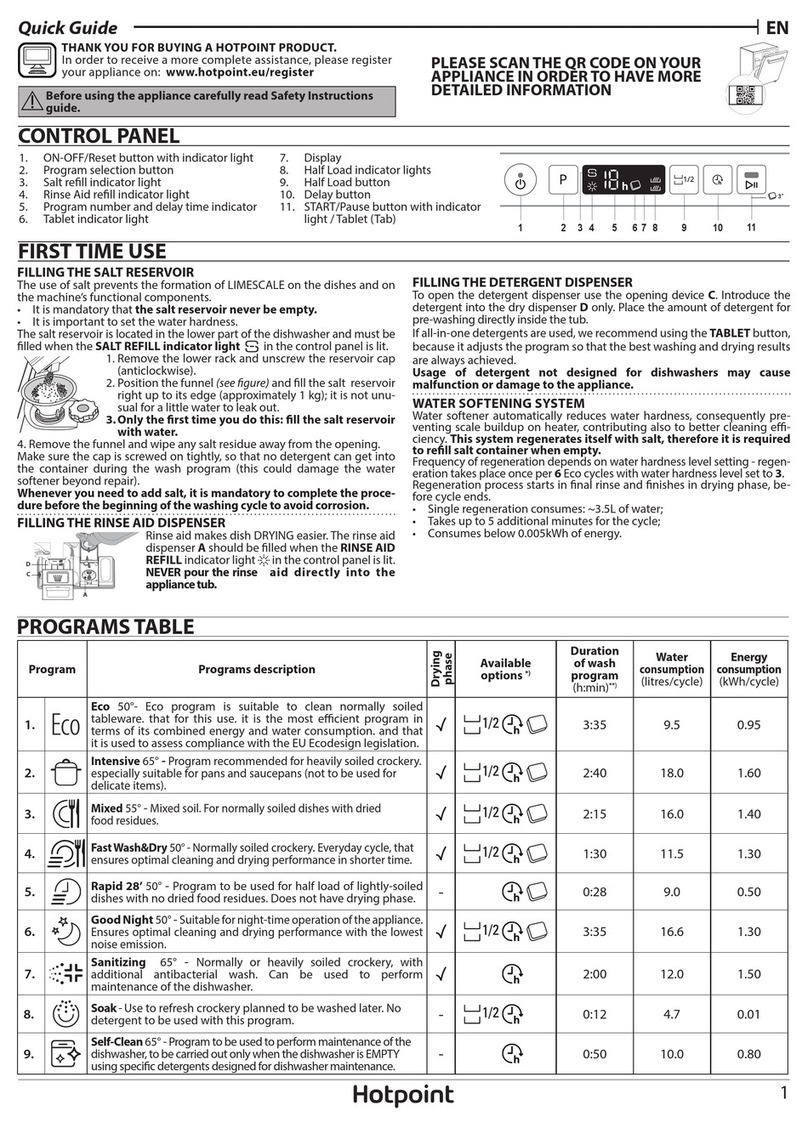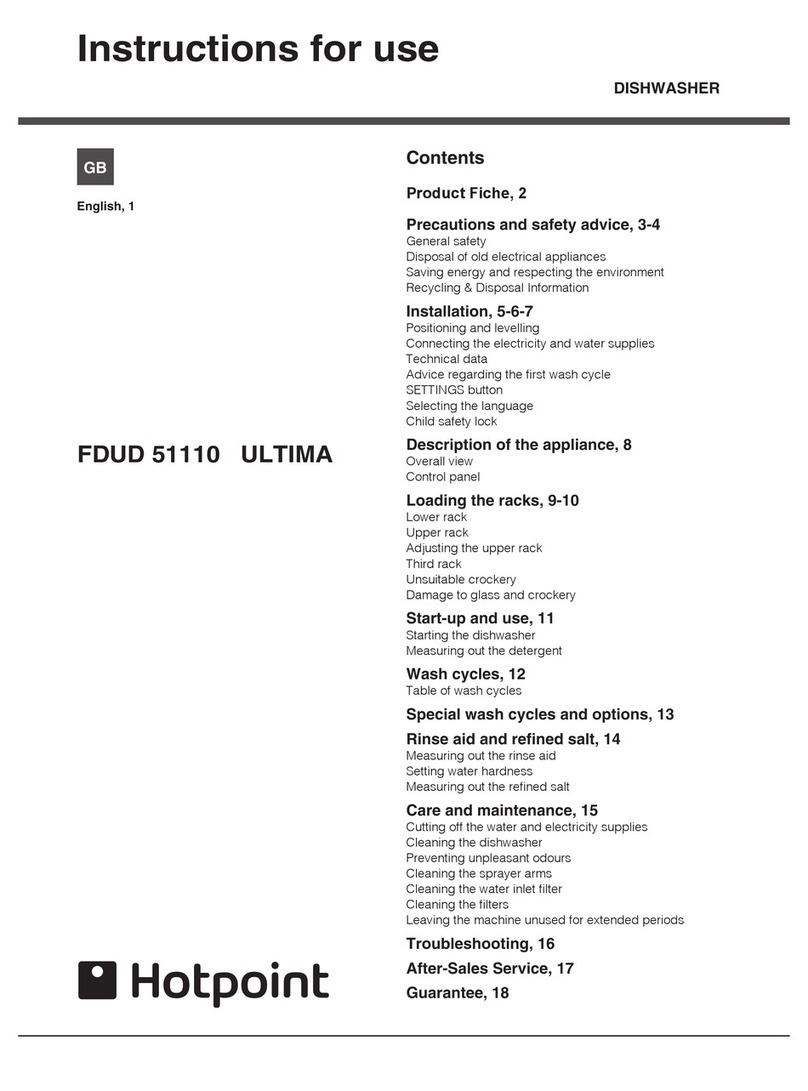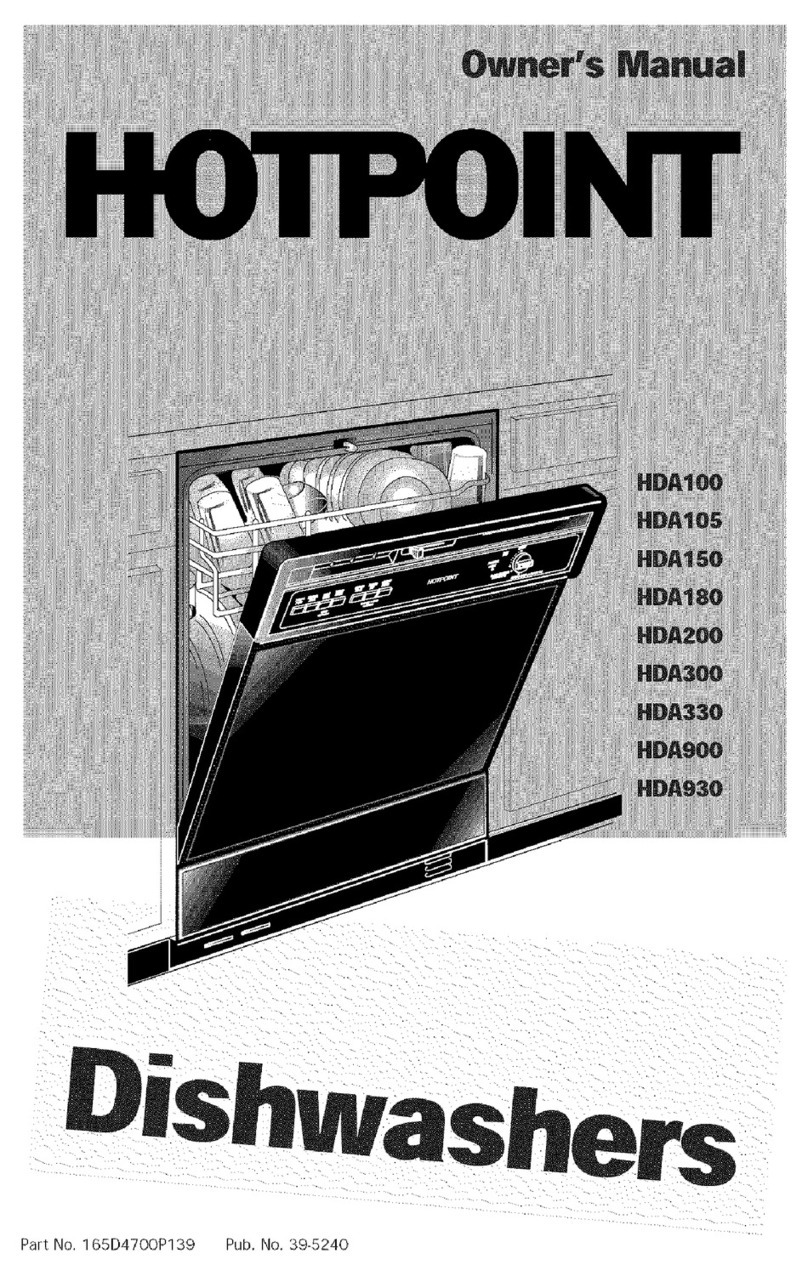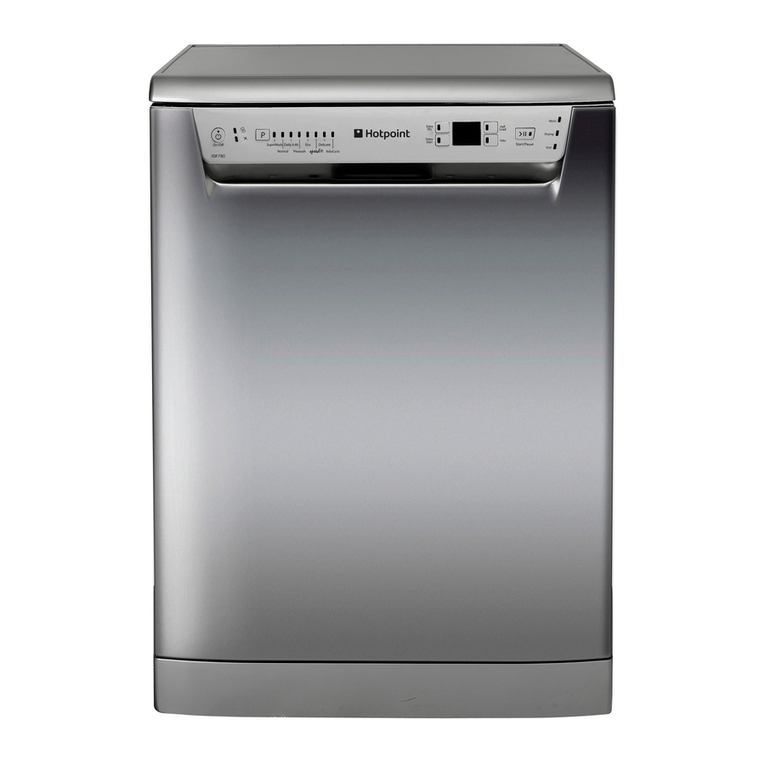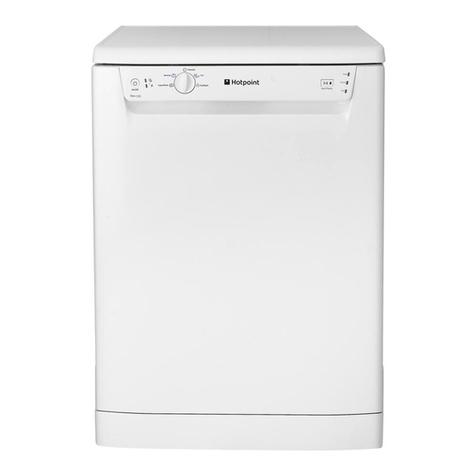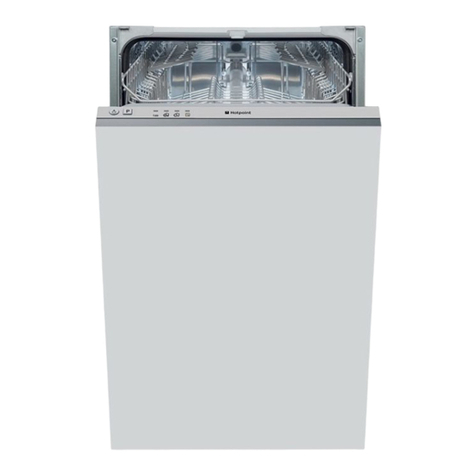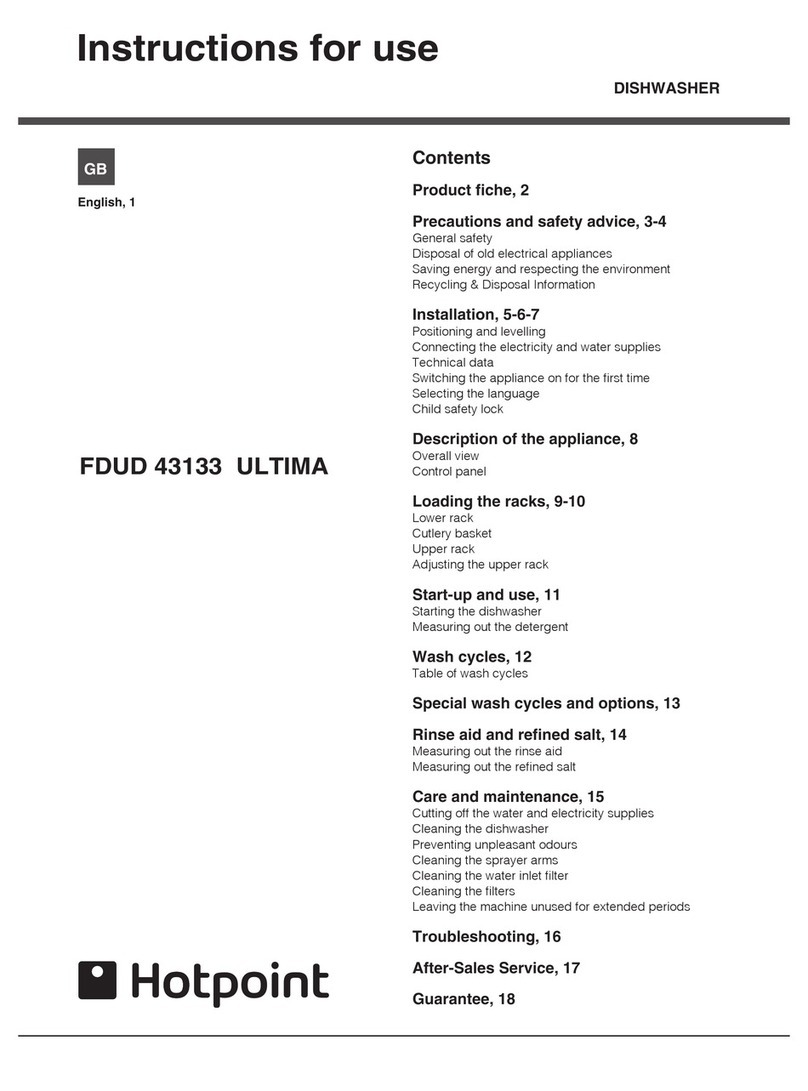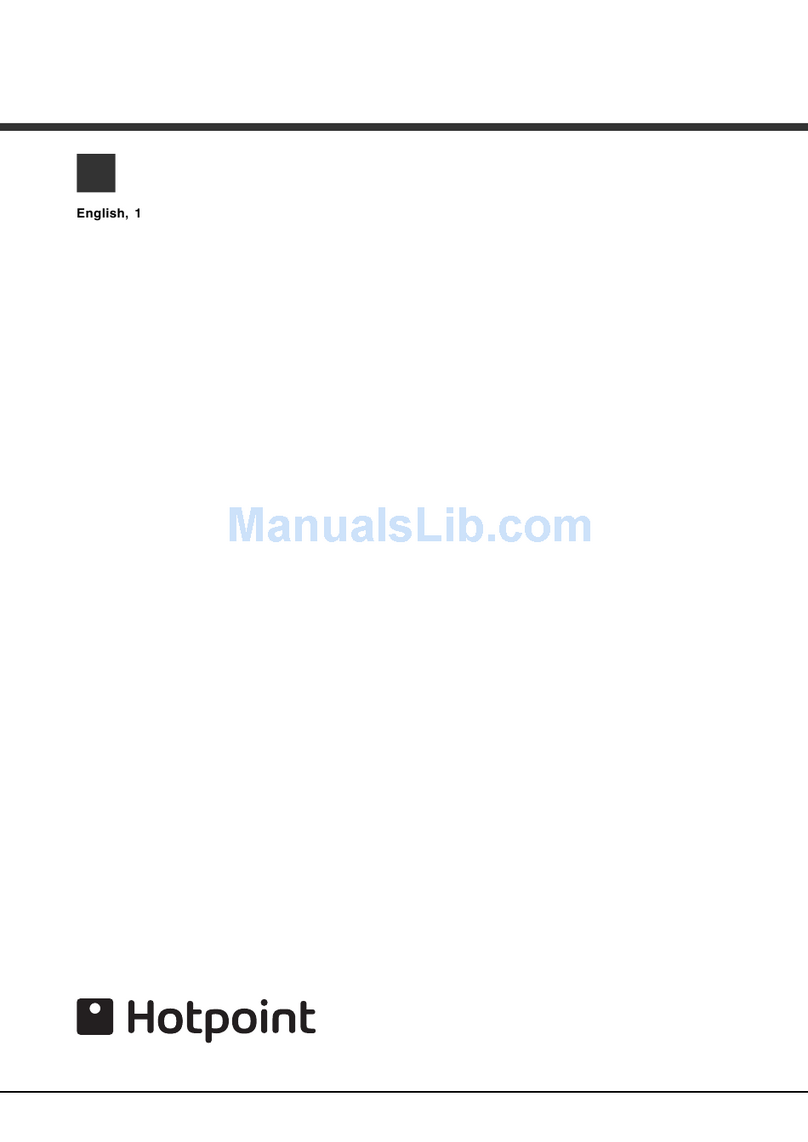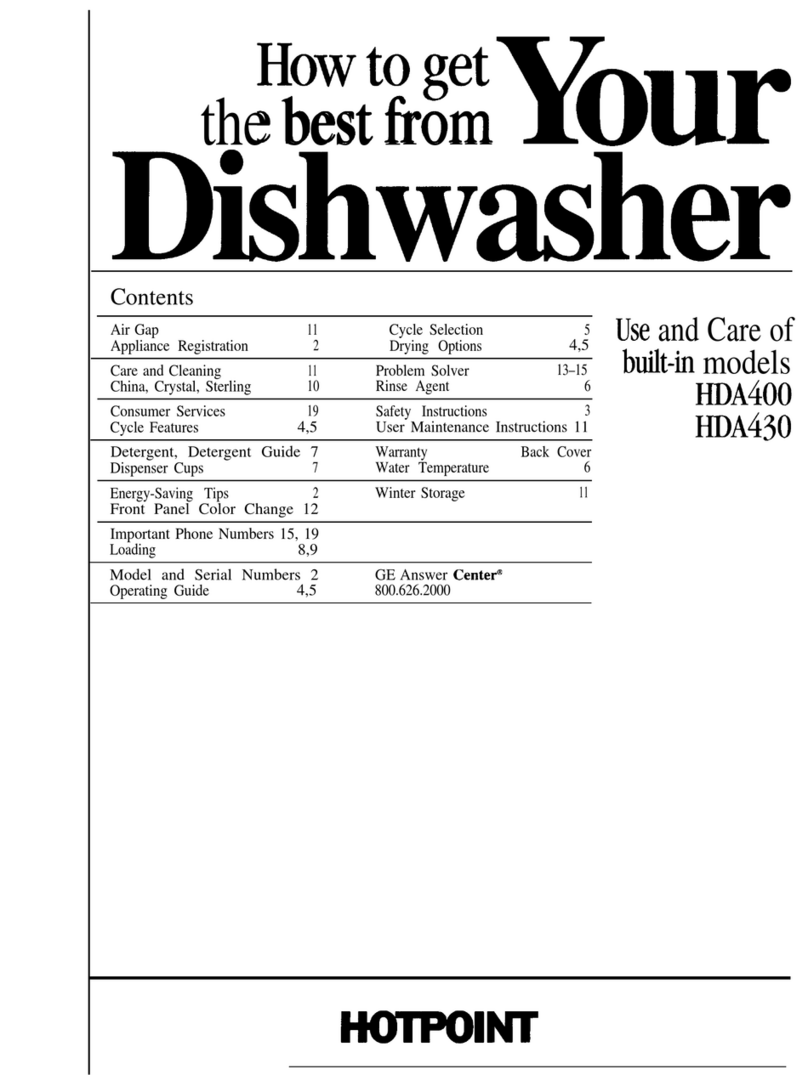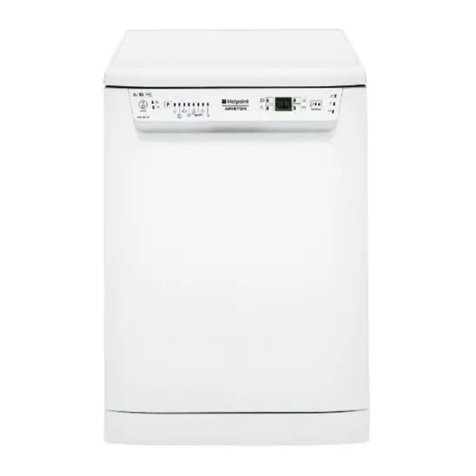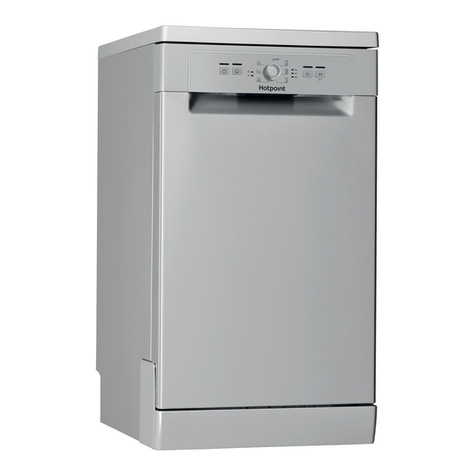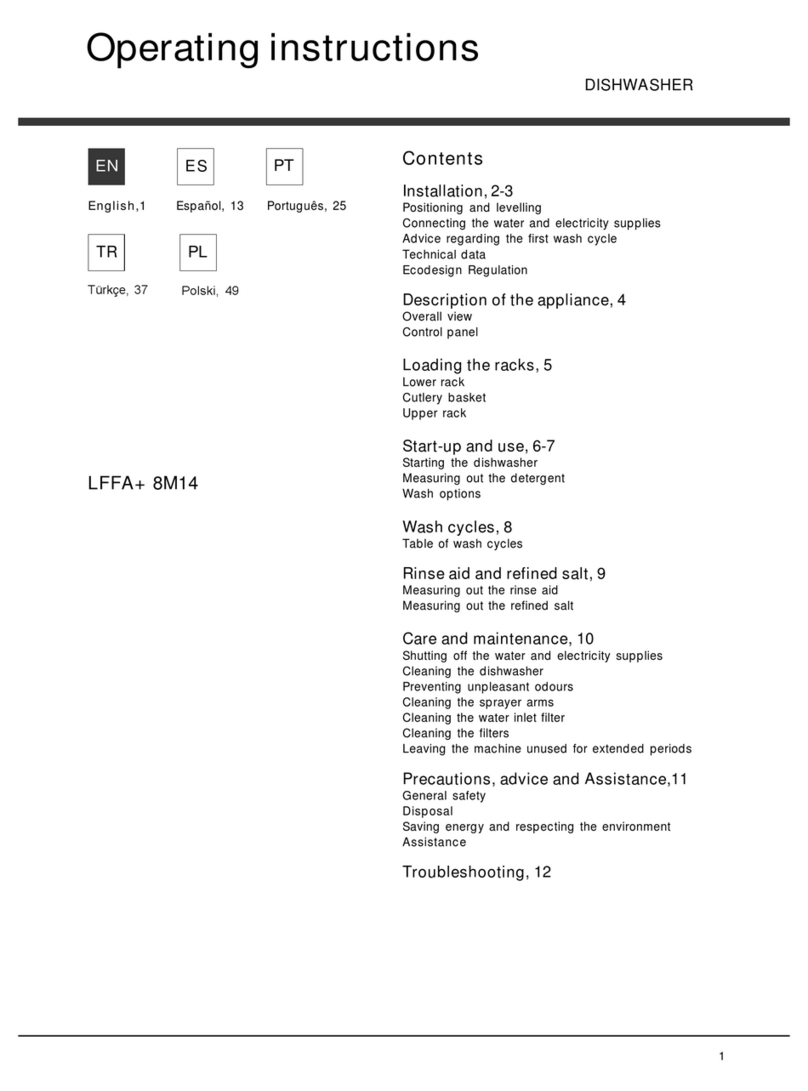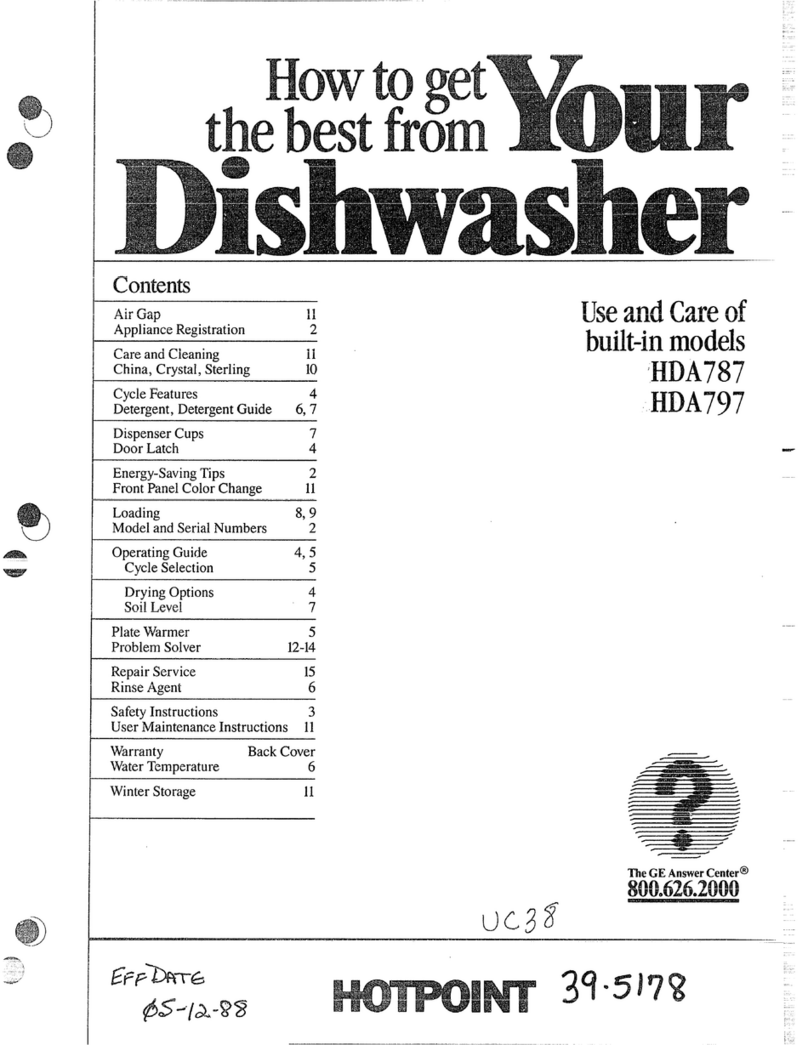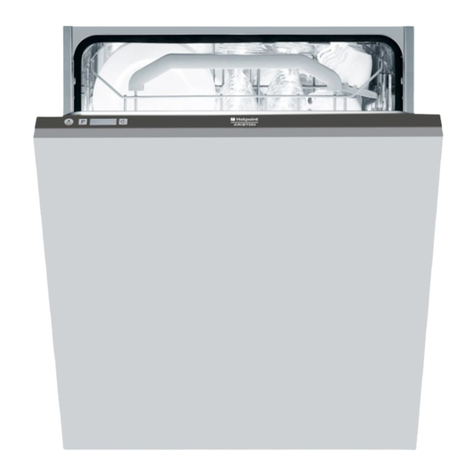8
EN
Start-upanduse
Measuring out the detergent
A good wash result also depends on the correct amount of
detergent being used; exceeding the stated amount does
not result in a more effective wash and increases
environmental pollution.
Only use detergent which has been specifically
designed for dishwashers.
DO NOT USE washing up liquid.
Using excessive detergent may result in foam
residue remaining in the machine after the cycle
has ended.
The use of tablets is only recommended for
models which offer the MULTI-FUNCTIONAL
TABLETS option.
To achieve the best results from each washing
and drying cycle, powder detergent, rinse aid liquid
and salt should be used.
Compartment A: Washing detergent
Compartment B: Pre-wash detergent
1. Open cover C by pressing button
D.
2.Pourinthedetergent after consulting
the
Tableof wash cycles
:
• For powder detergent use
compartmentsA and B.
• For detergent in tablet form: when
the cycle requires 1 tablet, place it in
compartment A and close the cover;
when it requires 2, place the second tablet at the bottom of the
appliance.
3.Removedetergentresiduesfromtheedgesofthe compartment
andclose the cover until it clicks.
Wash options*
The OPTIONS may only be set, modified or reset after the
wash cycle has been selected and before the Start/Pause
button has been pressed.
Only the options which are compatible with the type of wash
cycleset maybe selected.If anoption isnot compatiblewith the
selectedwash cycle (
seeTable ofwash cycles
),thecorrespond-
ing LED flashes rapidly 3 times and 2 short beeps will sound.
Ifan option is selected whichis incompatiblewith another(previ-
ously selected) option, the indicator light corresponding to the
option selected first will flash 3 times, 3 beeps will sound and it
will be deselected, while the most recently selected option will
remainactive.
Todeselect an option which has been setby mistake, press the
correspondingbutton again.
*Only availablein selected models.
Starting the dishwasher
1. Turn the water tap on.
2. Press the ON/OFF button: you will hear a short beep and the
displaywill light up.
3. Open the door and pour in a suitable amount of detergent
(
seebelow
).
4. Load the racks (
see Loading the racks
) and shut the door.
5.Select the wash cycle in accordance with the type of crockery
and its soil level (
see Table of wash cycles
) by pressing the P
button.
6.Select the washoptions*(
seeadjacent information
).
7. Start the cycle by pressing the Start/Pause button: a long
beepsignals the start of the wash cycle and the time remaining
until the end of the cycle is displayed.
8. Two short beeps and one long one indicate the end of the
wash cycle; the wash cycle indicator light flashes and the END
indicator light switches on (fixed light). switch off the appliance
by pressing the ON/OFF button, shut off the water valve and
unplugthe appliance fromthe electricity socket.
9.Wait for afew minutes beforeremoving the crockery,in order
toavoid burns.Unload theracks, beginningwith the lower level.
- The machine will switch off automatically during
certain periods of inactivity, in order to minimise
electricity consumption.
AUTO WASH CYCLES*:this model of dishwasher is
equipped with a special sensor which can be used to assess
thelevelof soilingand automatically selectthe most efficientand
economicwash cycleaccordingly.
The duration of the auto wash cycles may vary due to the
operationof the sensor.
Modifying a wash cycle in progress
Ifa mistake was made during the wash cycle selection process
it is possible to change the cycle, provided that it has only just
begun:once the wash cycle hasstarted, switch off the machine
by pressing and holding the ON/OFF/Reset button. Switch it
back on using the same button and select the desired wash
cycleand options.
Adding extra crockery
Press the Start/Pause button (the corresponding indicator light
will flash). Open the door, taking care to avoid the escaping
steam, and place the crockery inside the appliance. Press the
Start/Pause button (fixed light): the cycle will restart after a
prolongedbeep is emitted.
If the Start/Pause button is pressed so as to pause the
machine,thewashcycleortheDelayedStartfunction(ifselected)
isinterrupted.
At this stage it is not possible to change the wash cycle.
Accidental interruptions
Ifthe door is opened duringthe washcycle, orif thereis a power
cut,the cycle stops. It startsagain from the point at which it was
interrupted once the door has been shut or once the electricity
supply is restored.

